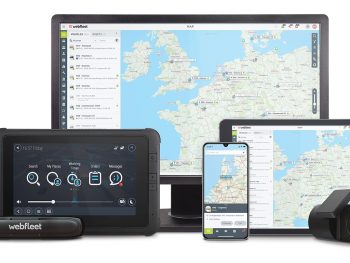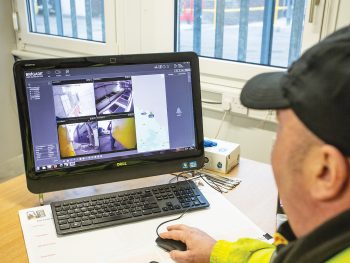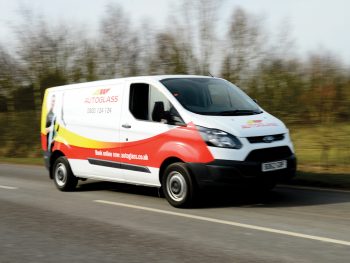Fleet operators choosing a dashcam or video telematics system are not short of choice. While that can be a good thing, it makes choosing the right one for your operations a challenge.
 Which information is of most use to your operation? What features will help your drivers to get the most out of the systems? How can you use the information available from the systems to help your drivers to become safer and more efficient behind the wheel without them feeling they are being spied on while they are at work?
Which information is of most use to your operation? What features will help your drivers to get the most out of the systems? How can you use the information available from the systems to help your drivers to become safer and more efficient behind the wheel without them feeling they are being spied on while they are at work?
These are some of the questions we put to a range of dash-cam and video telematics system suppliers…
If it’s good for the fleet manager, it’s good for the driver too, is how Barney Goffer, UK product manager for Teletrac Navman sees the advantages of video telematics.
One of the key benefits is as a guard against false claims – ‘cash for crash’. The effects can be far-reaching and “not just on the driver, but on the business,
on their insurance claims, on their livelihoods. Being able to prove you are not at fault is paramount,” says Goffer.
“I guess the flip side of that and possibly not a benefit is the First Notification of Loss (FNOL) to insurance companies. Being able to rapidly resolve a case is seen as a huge, huge benefit to the insurance industry. Probably to the fleet sector too, because it means that the right organisations are the ones that probably incur the additional costs of insuring their fleet as opposed to it being a blanket increase across the board for people that probably haven’t made a mistake in their lives and unfortunately they are just tarred with the same brush as those that are careless.”
Richard Peak, senior business development manager at Nextbase UK, shares Goffer’s view that benefits from dash-cams work for both fleet operators and drivers.
“Vans are an essential asset for many companies, who rely on them for delivering products and/or services. Each minute they aren’t on the road represents an unnecessary cost for firms.
“Protecting not just vehicles, but their drivers too, dash-cams make economic sense to firms, providing the ability to share high-quality footage, regardless of weather or light conditions, from the scene of any traffic incident. Apps link directly from the camera to the commercial driver’s phone and (optionally),
their fleet manager. This enables these incidents to be resolved quickly and ensures the vehicle is operational again without unnecessary delays.”
Peak also singles out the ability of the systems to guard against fraudulent claims and save money on insurance, both issues of particular concern to van fleet operators.
No Big Brother

Some drivers may be concerned that telematics systems and video telematics systems in particular are there to keep an eye on what they are doing.
“Vehicle telematics is not about surveillance; it’s about improving health and safety on the roads which in turn leads to a better work environment and general wellbeing for drivers,’ reckons Fearghal MacGowan, managing director of SmartWitness EMEA.
“Video telematics systems record when an event occurs and that’s what the fleet manager sees. It’s all event-based and it’s there to give an overview of a driver’s ability as a whole, so it can provide educational analysis to improve safety. It also provides support and evidence in the event of an incident, which in the majority of cases exonerates professional drivers from blame. And let’s not forget safer drivers means there’s the added benefit of improved insurance rates.”
Transparency about how video recording systems will be used is also important in building trust between the fleet manager and driver.
“Policies should be written, communicated and signed that show how the fleet operator will be using the system,” Brigade Electronics UK marketing manager Emily Hardy told VFW.
“For instance video surveillance will be used in the event of an incident. If the fleet operator has cause to question the validity of a driver’s behaviour, surveillance should be limited to that driver and for a set period of time. Only the assigned data controller should have access to footage and it should not be shared unless as part of an investigation. Any party misusing camera footage could potentially be in breach of GDPR.”
Case Study – Autoglass

Glass repairer Autoglass operates a fleet of over 1,000 vehicles in the UK and using Trakm8 systems, including RoadHawk dash-cams, has reduced speeding events across the fleet, reduced average idling time per vehicle by over 50%, improved driver behaviour further, while dash-cam evidence has improved nsurance claim handling. Autoglass did not require the dash-cam’s audio capabilities, so this was disabled, providing reassurance to drivers while still providing crucial video footage in the event of accidents and insurance claims.
Dash-cam and video telematics systems can make a valuable contribution to reducing costs and providing evidence to support drivers and guard against fraudulent claims.
Under the Microscope: Beverley Wise, director UK & Ireland, Webfleet Solutions

Examining the benefits video telematics systems can bring to both drivers and businesses.
The adoption of digital solutions accelerated apace during the pandemic and one element of this is the increased introduction of video telematics.
Telematics solutions have long offered a valuable eye on vehicle fleets, and integrated camera systems are increasingly bolstering this offering, with core benefits including improved safety, lower insurance premiums and reduced vehicle downtime.
The recently launched WEBFLEET CAM 50, for example, has given businesses complete oversight of how their vehicles are operating in the field, by combining Webfleet Solutions’ vehicle and driving data with advanced machine vision and artificial intelligence-powered camera technology.
Video telematics technology automatically identifies risky behaviour, such as distracted driving and mobile phone usage, and notifies the driver with a visual and audio alert, helping them avoid dangerous situations.
Not only does this give fleets better understanding of why driving incidents occur, and offer opportunities for targeted training and SMR savings, the video footage provides clear evidence in the event of insurance claims, helping to protect drivers from fraudulent claims and assist companies in avoiding protracted legal wrangling.
According to Webfleet Solutions’ European Road Safety Report survey, 40% of UK fleet decision-makers have installed reversing and side cameras in a bid to improve road safety, whilst 37% adopted front-facing dash-cams and 27% installed driver-facing cameras. Furthermore, half (51%) of businesses said they were offered a lower premium if they adopted a telematics system.
While acting as a powerful safeguarding tool, video telematics can also protect drivers’ privacy rights. Users, for example, can configure the cabin-facing cameras to be on or off, or turn on ‘privacy suppressed’ mode to prevent events from being retrieved from the device. WEBFLEET CAM 50 dashcams also come with a special cap to close the cabin-facing camera, if needed.
This allows drivers to feel in control of their privacy and reassures them that their safety is the driving factor behind the vehicle camera implementation, helping them to develop a harmonious and engaged relationship with video telematics, for their benefit.

